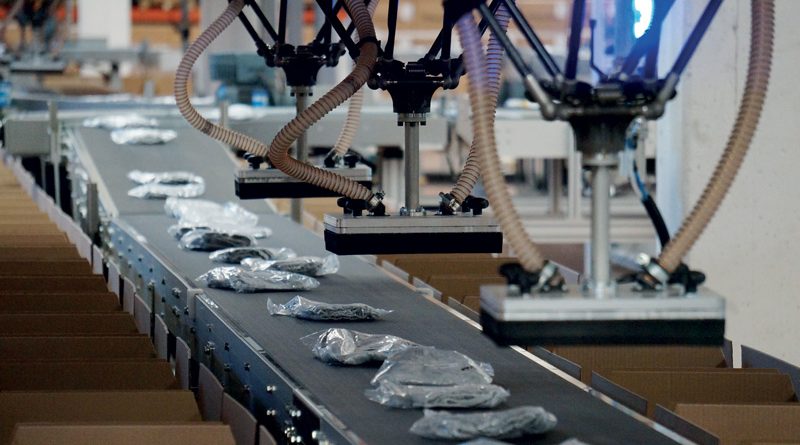Robots and Data: the Keys to Efficient Logistics
Spider Sorter is an innovative sorting system with robot automation based on intelligent information management in order to guarantee speed, energy savings, reduced labour costs and flexibility. The system, applied to Prenatal’s order picking process in Grandate (Como), was developed by Fast Man Service from Bareggio (Milan) in collaboration with Milan-based LID Logistic and ABB Robotics, which supplied the Flex-Picker robots.
by Leonardo Albino
There is a shared automation project behind the solution that has enabled Prenatal to increase productivity and reduce costs at its Lombard plant in Grandate (CO). Fast Man Service, specializing in the design, engineering and maintenance of logistics systems, and LID, an in-house and outsourced logistics company, turned to ABB’s Flex-Picker robots, already employed by Fast Man Service in the food sector, leveraging the handling features in an even more complex way. “At first we thought of a traditional sorter, but then we imagined a new system with reduced human interface”, explains Dario Sorice, CEO of Fast Man Service. Paolo Riva, owner of LID together with Dino Cardani, adds: “The idea immediately seemed to meet the needs of those who, like us, rely on high-throughput systems capable of handling large quantities of parts in several sectors”.
Everything the plant does
The plant consists of two introductory lines. The objects – children’s clothing – are loaded on two transport rings located at the sides of the box sorting line. The robots, three for each ring, pick them and place them in the boxes. The plant then creates the box and the reference, completes the order, closes the box, labels it with the data of the destination store and takes it to the end of the line.
Several types of item, different in terms of colour, size and so on, are inserted inside the single box. The robot is supposed to place them in the right box. The operator only has to put the objects into the rings.
The line can handle up to 7,000 codes that make up 250 orders at a time
The exchange of information is the key to the line. The starting point is a file created by the customer, which is unpacked into a database, and the objects are introduced into the rings. The system places the single piece for the single order in the boxes. This is done by means of the communication between the database and the ABB robot through cross information: when the object is inserted in the box, the stopover is made, indicated by the robot, until completion. The robot is controlled by a system that detects the shape, height and position of the pieces on the rings and by a scanner that reads the bar code and associates the object to boxes and destinations. From the bar code on the box, the robot gets the information that tells whether the object can be inserted or not. The crossing of data is very complex because the so-called “Order formation” communicates both with the ABB system and with the PLC of the machine itself, which operates according to algorithms developed by Fast Man Service. The line can handle up to 7,000 different codes, which make up 250 orders at a time. Compared to a traditional solution, the system ensures higher speed, energy savings, reduced labour costs and flexibility. It can also be reconfigured for new productions in quite a short time. Another important aspect lays in its scalability, in terms of number of rings as well as the possibility of integrating additional automation options.

